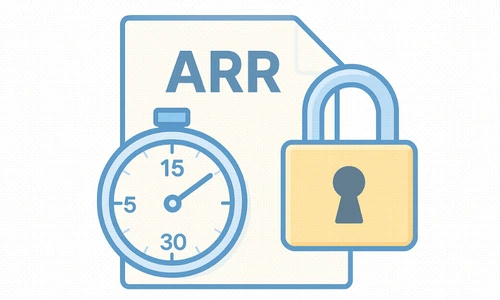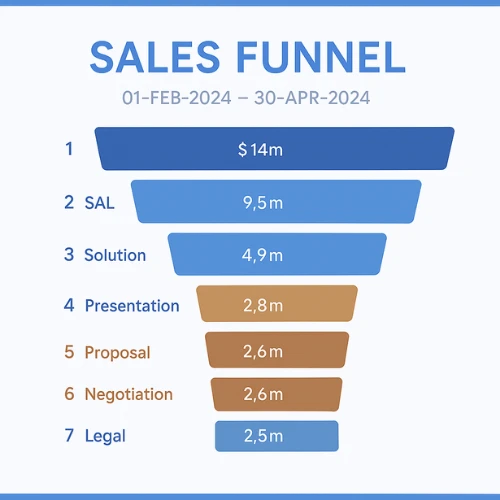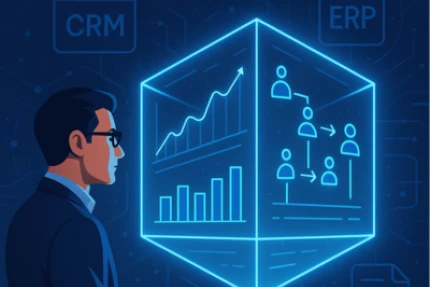
ARR Reporting
For B2B SaaS finance teams, clean ARR reporting is just the beginning.
The real challenge lies in navigating renewal ramps, classifying expansions correctly, segmenting self-service accounts, and tracking ARR without overcomplicating it, all while building forecasts that leadership can rely on.
In conversations with finance leaders across SaaS companies, one thing stands out: success doesn’t only come from having perfect data. It comes from having clear logic, consistent definitions, and systems that can scale with the business.
Here’s how teams are tackling the hardest parts of ARR, forecasting, and pipeline visibility, along with practical approaches you can apply.
Contracted vs. Live ARR: Where Teams Draw the Line
Some SaaS finance teams are tracking both Contracted ARR and Live ARR, but for different purposes.
Live ARR reflects the subscriptions that are active today. Contracted ARR reflects what has been signed, including deals with future start dates. For those tracking live ARR, some also track CARR to get a forward looking view of new logo and expansion bookings, in order to forecast total ARR into the future.
Renewals add complexity for CARR, especially when initial contracts include ramp periods. For example, in a 15-month agreement with three months of ramp and twelve months of billing, renewals would align to the 12-month period. If no renewal contracts are won, Churn would happen at the end of the subscription period. CARR magnifies ARR in the short term.
Late Renewals: Grace Period or Immediate Churn?
Approaches to late renewals vary widely, but consistency is key.
Some teams immediately mark an account as churned once the contract ends. Others allow for a grace period, often 1-3 months, especially when there is an open renewal opportunity or temporary billing in place. Marking an account as churned immediately will magnify churn and win backs, increasing volatility. In either case, clear internal rules help avoid confusion.
Common practices include:
- Locking ARR figures at the end of a period to prevent restatements
- Tracking late renewals separately from core ARR to understand both downside and upside
- Defining churn if not renewed by the end of the quarter in order to avoid restatement
Clear policies create alignment across finance, RevOps, Customer Success, and leadership and ensure ARR reporting is clear, transparent, and consistent.

Forecasting ARR: Scenario Modeling
ARR forecasting includes several components, including Renewal Rate, Gross Revenue Retention, Net Revenue Retention, and New Logo bookings.
Renewal forecasting has matured well beyond pulling a list of contracts nearing expiration. Leading teams are building multiple scenarios by understanding customer segment level behavior and trends. This includes:
- Understanding historical renewal rates by customer segment
- Understanding what’s available to renew for each period
- Setting lower and upper bounds of renewal rates
- Projecting ARR by customer segment based on the different renewal rates
- Taking into consideration contract duration, from short-term to multi-year contracts.
- Project GRR based on the renewal rate range and downsell behavior
- Forecasting GRR is only one layer of ARR forecasting. Overlay GRR data with New Logo and Expansion forecasts would then get you overall ARR forecast. New Logo and Expansion forecasts have their own nuances, which we will discuss below.
The Story Behind Expansion and Downgrades
With ARR growth under more scrutiny, many teams are trying to explain the story behind ARR changes.
Expansion reporting is no longer just about existing customers. It requires contract-level detail and historical comparisons. Most teams further slice expansion as follows:
- Upsell is an increase in quantity of an existing product
- Cross-sell is the addition of a new product or SKU
- Price increase is a higher price for the same product(s) and quantity
The most accurate approach is to compare prior and new contract or quote details programmatically. This removes guesswork and ensures consistent reporting across accounts.
Pipeline Visibility and Cohort Analysis
Pipeline reporting is becoming a shared responsibility between sales and finance, especially when used to drive ARR forecasting.
Instead of viewing pipeline as a static total, teams are tracking pipeline cohorts based on creation date range. This allows them to analyze how long deals take to convert, how much will close won, and which segments perform best over time.
This approach supports more accurate:
- Conversion rate modeling by region or segment
- ARR forecasting based on historical conversion patterns
- Scenario planning that adjusts inputs like ASP and sales velocity
When paired with a clear renewals and GRR forecast, pipeline cohort analysis gives a forward-looking view of ARR with multiple scenarios.

Clean ARR Starts with Better Data Design
All of these practices depend on having the right data structure and process in place.
High-performing teams are focusing on the basics:
- Capturing product and pricing detail through CRM line items or CPQ tools
- Creating subscriptions tied directly to closed-won opportunities
- Linking renewals and expansions to the original contract
- Aligning billing, CRM, and analytics systems with consistent definitions for ARR, churn, and renewal
When data is structured correctly, ARR becomes easier to report, forecast, and explain, no matter how complex the business model.
Final Thought
ARR isn’t just a number, it’s the financial heartbeat of your business.
It reflects how your company grows, retains, and plans for the future. But as your business scales, so does the complexity behind that number. Clean, consistent ARR/GRR/NRR reporting doesn’t just save time, it creates the space for finance teams to focus on strategy, not spreadsheets.
Discern helps automate the mechanics and helps you improve data quality, so you can spend more time guiding the business forward.
Book a walkthrough to see how leading SaaS finance teams are scaling their ARR, forecasting, and planning infrastructure with Discern.
ARR is the financial heartbeat of your business



